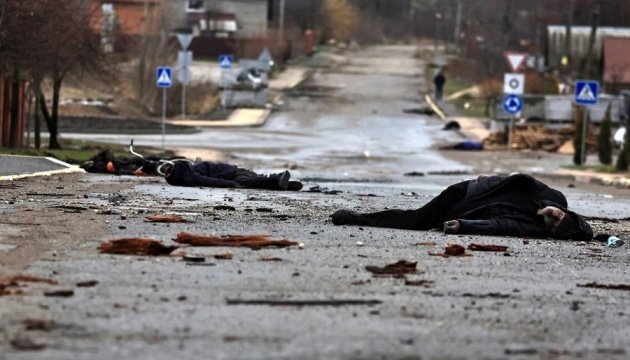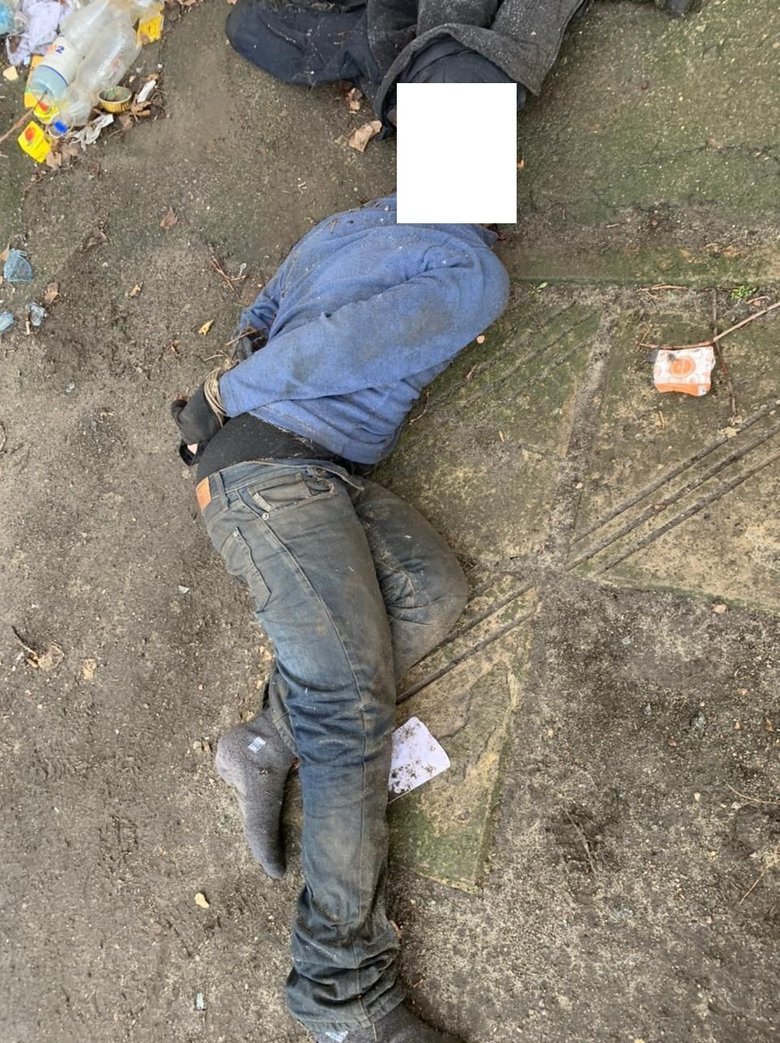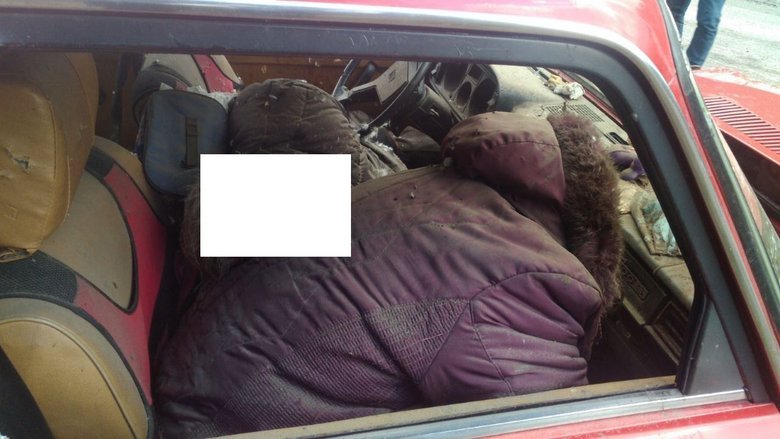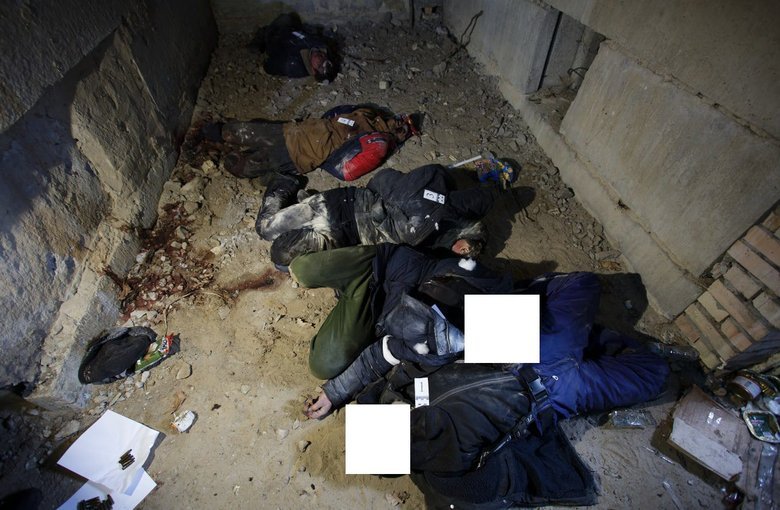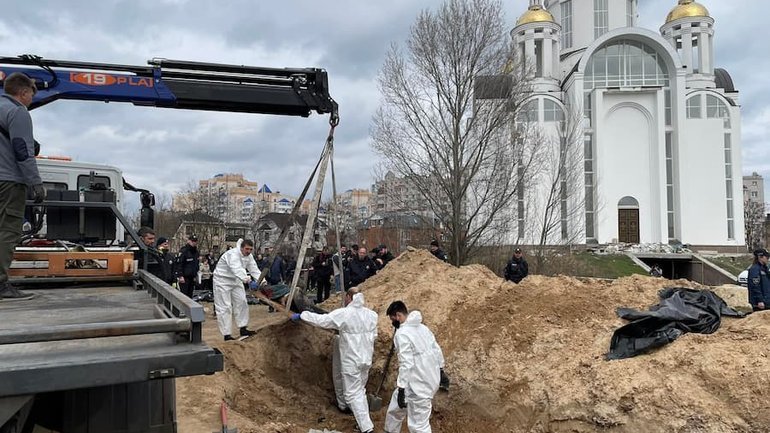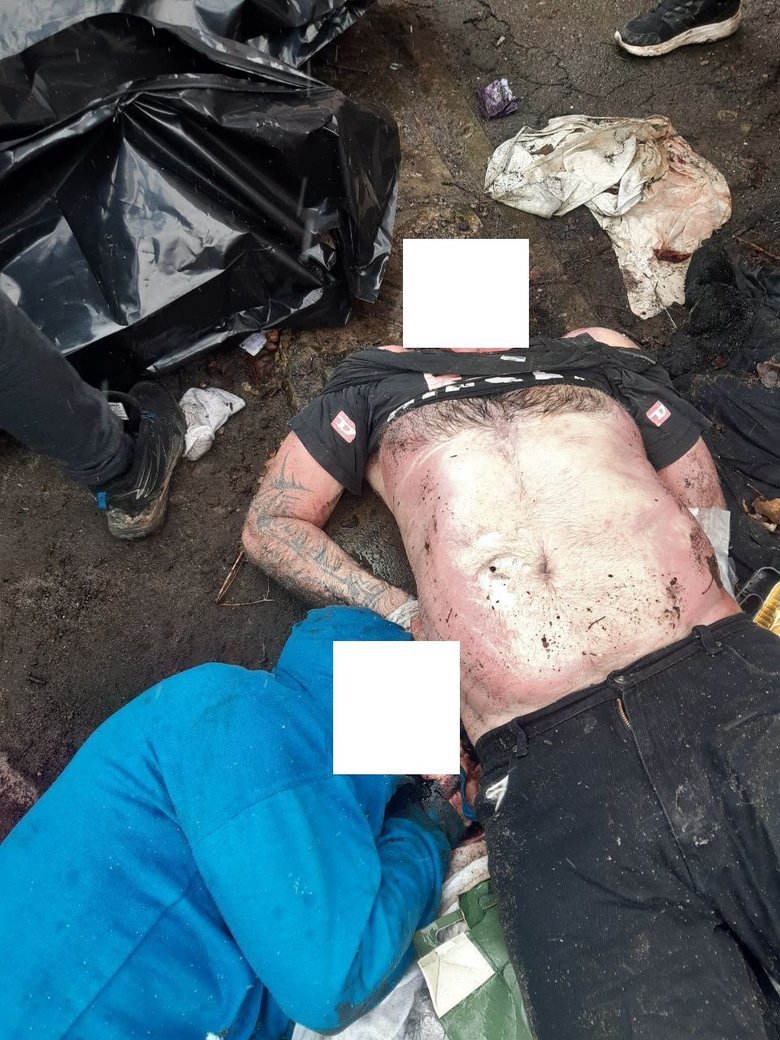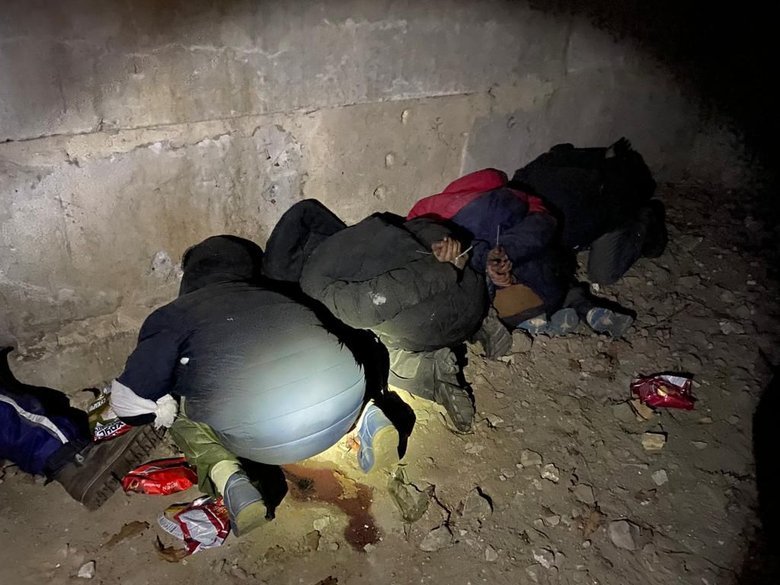Shot for refusing to carry out order: how civilians were murdered in Bucha and who is being tried for these crimes
Law enforcement officers have notified another Russian serviceman of suspicion after he opened fire on a local resident in Bucha during the occupation, simply because the man refused to go down to the basement of an apartment building as ordered.
Other servicemen approached the scene, one of whom also opened fire. As the Office of the Prosecutor General told Censor.NET, the 41-year-old Bucha resident was shot at least 16 times. The agency noted that a total of 358 civilians with no connection to the military were killed in Bucha in the spring of 2022. While some of those involved in the executions have already been identified, the investigation into these crimes is still ongoing.
Censor.NET journalist looked into how many Russian soldiers have already been held accountable for their actions in Bucha.
WITNESSES DIDN’T WANT TO SPEAK, FEARING THE RUSSIANS’ RETURN
As the Office of the Prosecutor General told the outlet, the Department for Countering Crimes Committed in Armed Conflict is currently providing procedural guidance to the pre-trial investigation in two criminal cases that consolidate 324 criminal proceedings concerning the killing of civilians in Bucha.
The investigations into these crimes began in the first days of the full-scale invasion. Prosecutors and investigators opened proceedings for every documented instance and consequence of Russian aggression, went directly to crime scenes, conducted examinations, and recorded evidence.
Recalling February 2024, Prosecutor General Ruslan Kravchenko who at that time headed the Bucha District Prosecutor’s Office says that when Russia began occupying Crimea in 2014, he worked as a senior investigator at the Military Prosecutor’s Office of the Sevastopol garrison, and therefore by the time of the full-scale invasion in 2022 he already had experience investigating war crimes under such conditions. "During the occupation of Crimea, I carried out all the necessary investigative actions, for example, when the Russians seized the airfield. I also witnessed how they seized our prosecutor’s office, and I remember how we evacuated criminal case files and, on our leadership’s orders, destroyed classified documents. In other words, I already had the necessary experience of how to respond in such a situation," he notes. "And when I arrived in Bucha on the first day of the full-scale offensive by the Russian army, there was no panic, because I knew what had to be done.
At that time, half of our staff were women, and almost all of them had children. So I ordered them to leave the prosecutor’s office and protect their children. Those of us who remained split up. Some handled documents that could not be allowed to fall into enemy hands. Others immediately began recording and documenting the events as they unfolded, collecting evidence of the Russian Federation’s aggression. For example, when helicopters came in and our Armed Forces of Ukraine shot them down, prosecutors would deploy to the scene, examine it, and collect all necessary evidence. We worked in this mode until 3 March 2022."
According to Kravchenko, the prosecutors continued to document crimes even after they relocated, on their leadership’s orders, to another locality in Kyiv region, working remotely. It was during that period that our newsroom received repeated calls from that prosecutor’s office in response to items we published citing posts on social media, explaining that they were trying to promptly record testimonies from people who managed to escape the occupation or report information.
Commenting on this period, the Prosecutor General adds that not only Bucha, but also Irpin, Hostomel, Borodyanka and a number of other towns in the Kyiv region that were captured and affected were within his competence and responsibility. But when the prosecutors saw the scale of the destruction after the de-occupation in April of that year, and the number of massacres and other war crimes committed in the Kyiv region, it became clear that the Bucha District Prosecutor's Office alone could not handle it all. At the initial stage, therefore, the Kyiv Regional Prosecutor’s Office, the Security Service of Ukraine (SSU), the National Police, and the State Bureau of Investigation (SBI) joined in, effectively partitioning the areas where investigative actions were to be conducted.
Kravchenko was responsible for investigating war crimes specifically in Bucha, which suffered extensive destruction and where hundreds of civilians were killed, their bodies left, after the Russian army’s withdrawal, lying in the streets and in sites of temporary mass burial.
To document all these facts and conduct a systematic investigation, an interactive map was created, onto which data on the bodies found were plotted. Information obtained from victims and witnesses was also organized.
"Another line of work was to locate witnesses and victims and interview them. We had to question the same people several times because they were afraid and believed the Russians would return," he explains. "In parallel, any surviving CCTV footage was seized and examined. Radio reconnaissance was also conducted to identify all mobile phones that were present in the city during the occupation, whether belonging to Russian or Ukrainian subscribers, for further investigation and the discovery of new evidence."
Work then began to identify the military units stationed in Bucha and the soldiers and commanders who might have been involved in committing war crimes, with the involvement of the security services and IT specialists.
"For me, it was an investigation driven by technology," says Ruslan Kravchenko. "Video footage showing servicemen of the Armed Forces of the Russian Federation was uploaded into specialized programs to find the closest matches to individuals on the territory of Russia. Then, through the security services, those people were identified and it was determined whether they were affiliated with particular units of the Russian Federation’s armed forces."
Subsequently, he says, expert examinations and other investigative steps were carried out. Law enforcement also worked with social networks.
KILLED FOR BEING UKRAINIAN
It was then, in Bucha, that prosecutors first came upon sites of mass burial of civilians. And there were several of them within the city. The largest, as noted by the Prosecutor General’s Office, was near the Church of St. Andrew the First-Called and All Saints, where 116 bodies and remains were found. Photographs and video from the burial sites, particularly from the grounds of St. Andrew’s Church, were published by global media after the city’s de-occupation, prompting shock and condemnation across the civilized world.
"At first, the Russians did not allow the bodies of people they had killed on various streets of the city to be collected. But the bodies began to decompose and there was a risk of an environmental catastrophe. So the Russians allowed a site to be chosen for temporary burials; the church grounds were selected," Kravchenko continues, adding that he will remember for the rest of his life the body of a woman who, as her clothing and badge showed, worked at the local ‘Epicentr’ hypermarket. A woman who lived her life, went to work, and was killed simply because she was Ukrainian. An unarmed civilian who offered no resistance.
Likewise, the man who was killed on the stairs leading to the basement of an apartment building, where civilians were sheltering, offered no resistance. As the Office of the Prosecutor General told Censor.NET, according to the investigation, in March 2022 a squad leader, who was also the vehicle commander of the 4th Air Assault Company of the 234th Air Assault Regiment of the 76th Airborne Division of the Armed Forces of the Russian Federation, simply spotted him while on patrol and ordered him to go down to the basement. When he did not get the response he wanted, he opened fire.
He has been charged with violation of the laws and customs of war combined with intentional killing committed by a group of persons (Part 1 of Article 28, Part 2 of Article 438 of the Criminal Code of Ukraine), since he was not the only one who fired.
The pre-trial investigation in this criminal case is being conducted by the Main Investigative Department of the National Police of Ukraine under the procedural guidance of the Office of the Prosecutor General.
We asked prosecutors whether any instances had been documented of civilians resisting or attempting to defend themselves. It turned out there were none. People were killed solely because they were Ukrainian.
"We established cases where there was an order to eliminate Ukrainians and we proved it with evidence. As a result of that order, we observed the conduct of servicemen of the Armed Forces of the Russian Federation who were in Bucha. For example, in one instance a man and his teenage son were riding bicycles. They were stopped by one of the Russian servicemen, who asked, ‘What are you doing here?’ They replied that they were local residents on their way to collect humanitarian aid. They answered in Russian so as not to provoke him. And he started shooting at them, one round at a time, in sequence: first at the legs, then the torso, the arms, and finally the head. The father died, and the son survived by a miracle. He later gave many interviews. For us, and for the entire world, he is a victim and a witness who will be able to testify, when the time comes, before a Special Tribunal."
And this is only one of thousands of examples across the country. That is why I am certain and my certainty is evidence-based that there was an order to occupy territory and to eliminate Ukrainians as an undesirable nation. First came the order, and then its execution.
We established and found evidence that the Russians told the civilian population to tie white armbands around their wrists if they wanted to live. The Germans did the same during World War II. Yet a large share of those killed were precisely the ones wearing white armbands," the Prosecutor General said.
For now, the prosecution reports that 11 bodies of the deceased remain unidentified; work in this area is ongoing.
As to Russian allegations that all these crimes were supposedly staged by Ukrainians themselves, the Prosecutor General stated: "We found a witness who lived on Yablunska Street during the occupation, the street with the highest number of killings. For several days in early March he filmed, from the second floor, what was happening on his phone. In particular, he captured the killing of civilians by servicemen of the Armed Forces of the Russian Federation. I think you’ve seen those images: an elderly man cycling with potatoes who was killed, with a dog lying beside him. We seized that witness’s mobile phone and conducted examinations; the International Criminal Court conducted its own examinations as well, as did other experts from the civilized world, everyone except Russia. And they concluded that these are actual video recordings; they were shot as shown. In other words, we established for the entire world that it was the Russians who did the killing, no one planted any bodies."
He emphasized that there were no Ukrainian military units or special forces operating in Bucha district at all; these were civilian towns inhabited solely by civilians. And it was civilians who were being killed.
According to the Department for Countering Crimes Committed in Armed Conflict, investigations into the mass killings of civilians in Bucha have identified 75 servicemen of the Armed Forces of the Russian Federation, and 85 notices of suspicion have been issued.
At present, two indictments against two servicemen of the Armed Forces of the Russian Federation, charged with the killing of civilians in the city of Bucha are pending before the court. The defendants are personally taking part in the court hearings.
There have not yet been any verdicts in cases concerning the killings of civilians in this city. As the Prosecutor General’s Office explains, this is due to the lengthy in absentia proceedings and the heavy caseload of the courts, which complicate the prompt consideration of cases.
Tetiana Bodnia, Censor.NET

